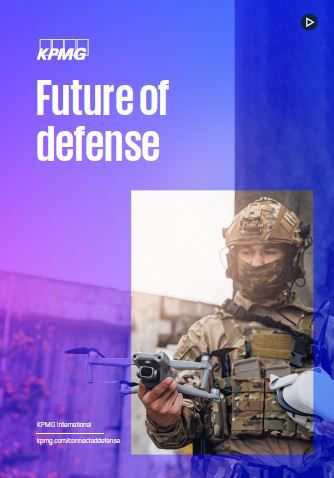Defence forces are in a race to adapt and transform. Success will heavily depend on fast decision-making, driving an agile response to ever-changing circumstances. There is a critical need to accelerate digital adoption working in concert with alliance partners and, where appropriate, commercial providers to help national defense investments deliver their intended capability and capacity.
We invite you to explore the signals of change below and download the full report to learn more about the future of defence.
Signals of change and main trends
Speed is a significant differentiator to gather and process data and generate insights for decision makers, enabled by data management and analytics.
Robotics, autonomous vehicles and nanobots are augmenting and, in some cases, replacing humans.
Simulations like the metaverse are helping defence forces build quicker and more accurate scenarios to test out decisions.
Cloud, 5G/6G and multi-domain connectivity are powering a connected defence force.
There is a re-emergence of great power competition — and much will hinge on the response of traditional and emerging alliances.
Investment trade-off between conventional and new capabilities is a reality.
Future weapon systems introduce a new dimension in range, lethality and speed.
Connectivity between weapon systems, fighting platforms and decision makers is key, with the Internet of Things (IoT) sensors gathering data on humans and equipment.
In a changing geopolitical landscape, Western nations are striving to establish space as a combat and command domain.
Key focus areas are: agreeing opportunities and challenges in space, harmonising civilian space activity, and orchestrating ambition and maturity across nations.
Cyber security is critically dependent upon achieving cyber-worthiness to help ensure that a system, collection of systems or entire platforms can operate securely and effectively in a range of environments.
Interoperability with allies is a key strategic strength, enabling vital data to be shared securely.
To maintain cyber security, suppliers of equipment and software should be carefully vetted and monitored — ideally by a dedicated cyber-worthiness team.
The supply chain disruptions that began during the COVID-19 pandemic have led defence forces to reconsider their manufacturing footprint to help improve reliability of supply.
It’s not just availability that is under the spotlight. Supply chain integrity is an increasingly important consideration to assure procurers that suppliers and their products are genuine, and that intellectual property (IP) remains secure.
Defence forces have an important role to play in supporting national climate goals, addressing emissions in existing platforms, infrastructure and estate, and incorporating sustainability and decarbonisation into future acquisition programmes.
Forces should anticipate the need to adapt to a world where climate change can drive conflicts, influence battle conditions and impact supply chains.
Readiness plans should enable forces to support civilian populations during climate change-related disasters.
Military facilities are increasingly at risk of damage caused by natural disasters such as hurricanes, tornadoes, fires and flooding. Protecting existing infrastructure and designing more climate-resilient bases in the future are high priorities for many, especially as facilities need to be close to water sources. Innovations include wind-resistant, circular buildings and mobile structures that can be moved in the event of an extreme weather event.
Indeed, the traditional large stationary military site may become a thing of the past.
The future workforce should integrate humans and machines, calling for both technical and creative skills.
New types of leadership are required to empower people and attract talent.
At KPMG in Singapore, our professionals focus on improving connected capabilities across your enterprise to allow you to prioritise, shape and execute your digital transformation. With this mission at the core, these are five critical questions that defence organisations should ask themselves:
1. Are you connecting commanders with the insights they need to make data-driven decisions on future capability needs?
2. Are you connecting and empowering your employees to deliver the mission?
3. Are you connecting your front, middle and back offices to execute in support of the needs of the battlefield?
4. Are you connecting your ecosystem of partners to jointly deliver on the mission?
5. Are you connecting to geopolitical and digital signals of change?
Connect with us
Get in touch to learn more about building robust defence capabilities through digital transformation.
Connect with us
- Find office locations kpmg.findOfficeLocations
- kpmg.emailUs
- Social media @ KPMG kpmg.socialMedia

